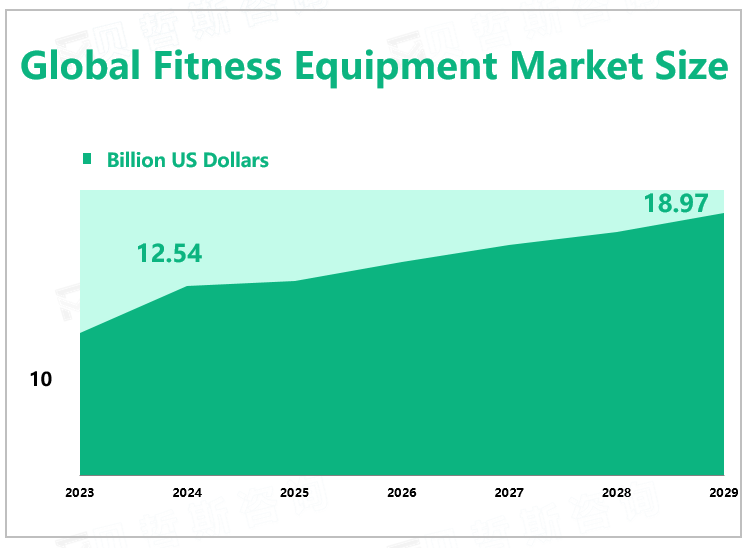Global Fitness Equipment Market Overview
According to Global Market Monitor, the global fitness equipment market size is $12.54 billion in 2024 and is expected to grow to $18.97 billion by 2029.
Fitness equipment is a subset of the larger sporting goods sector ranging from simple spring-like devices to computerized electromechanical rides. Treadmills, exercise bikes, ellipticals, rowers, and strength equipment are widely used fitness equipment.
Consumers Profile
By end user, the market is segregated into home consumers and commercial users. With the right gym equipment, people can create a dynamic, affordable, and safe workout from the comfort of their homes. When consumers buy home fitness equipment, it will be brand-new at a price that will not cost as much as commercial fitness equipment. Commercial fitness equipment is what consumers will typically find at a local gym. Commercial fitness equipment will be more durable.
Busy lifestyles, lack of routine physical exercises, and increased consumption of packaged, processed, and fast food are increasingly becoming the norm for the urban populace of the world. Stress levels are also hitting upsetting levels, especially among the working middle-class populace residing in rapidly expanding urban spaces in emerging economies. Repercussions of these factors are highlighted by the rising prevalence of chronic diseases such as diabetes, and cardiovascular conditions, and the swelling population of obese people across the globe. Obesity and associated health concerns are also on a worrying rise across the globe. The scenario has had a wide-ranging impact in terms of increased awareness regarding the need for regular exercise to prevent such conditions. As a result, the global population is increasingly focusing on ways of managing weight and leading healthy lifestyles. This has significantly benefited the global market for Fitness Equipment among other exercise equipment.

More Intensive Competition
With the continuous improvement of consumption level and consumption consciousness, consumers will pay more attention to the intellectualization, networking, and personalized needs of products while pursuing the functionality and safety of fitness equipment products. In the future, enterprises will integrate health management, cloud computing, big data, and Internet of Things technology into fitness equipment products, and further upgrade the interactive entertainment, intelligent science, self-management, and functional diversity of fitness. The market has witnessed a rising demand among the growing urban population in a bid to meet their fitness goals. There are tremendous opportunities for advancements in smart fitness devices owing to the increasing usage. Additionally, enhanced internet accessibility and growing penetration of the Internet of Things (IoT), which help to direct digital controls for improved Machine-to-Machine(M2M) communication, have encouraged users to adopt smart fitness devices, thereby driving the market growth.
Icon Health & Fitness is one of the major players operating in the Fitness Equipment market, holding a share of 17.46% in 2023. Icon Health & Fitness, Inc. is a manufacturer, developer, and marketer of exercise equipment based in Logan, Utah, United States. It has a wide range of brands, products, and technologies, including the brands NordicTrack, ProForm, Weider, Gold's Gym, and FreeMotion Fitness, developing manufactures, and markets fitness equipment. The Company provides treadmills, elliptical machines, exercise and stationary bikes, weight benches, yoga and pilates equipment, hand-held exercise products, performance apparel, and strength training products. Icon Health & Fitness distributes its products worldwide.
|
Company Name |
Icon Health & Fitness |
|
Website |
www.iconfitness.com |
|
Established Time |
1977 |
|
Headquarters |
US |
|
Sales Region |
Worldwide |
We provide more professional and intelligent market reports to complement your business decisions.